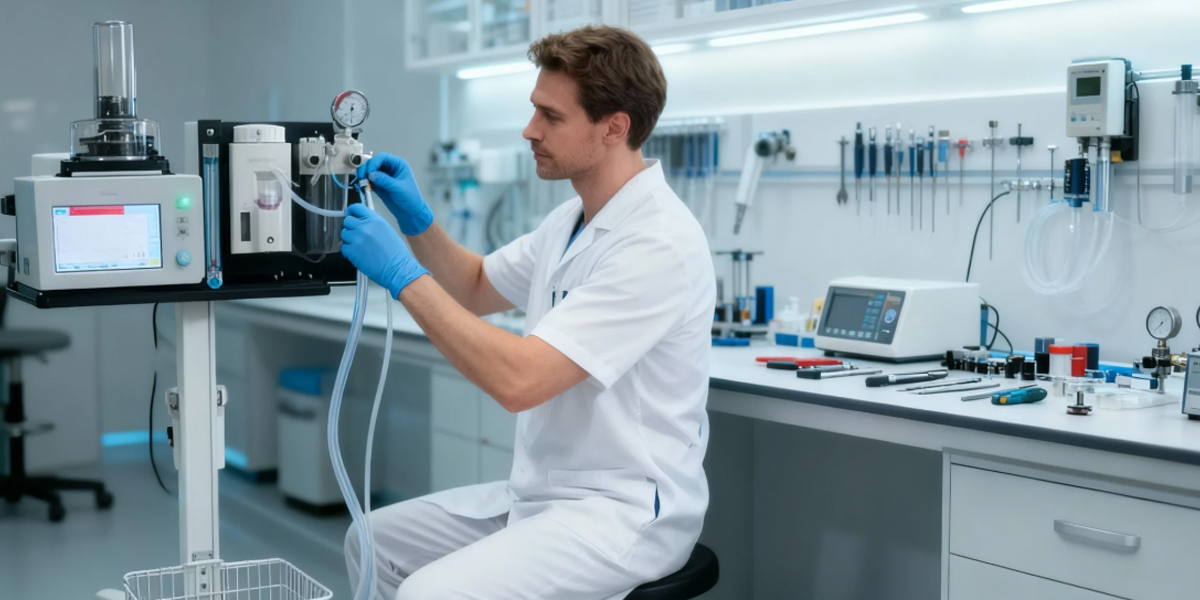It’s a scenario familiar to many veterinary professionals: you’re in the middle of a critical procedure, and suddenly, the animal anesthesia machine alarms. Perhaps it’s unstable flow rates, a suspected leak, or an unexpected reading. In these moments, it’s not just patient safety that’s compromised; it’s the clinic’s workflow, reputation, and bottom line. Downtime isn’t just an inconvenience—it’s often the biggest hidden cost associated with anesthesia equipment.
This guide is designed as a practical troubleshooting manual for veterinarians and technicians. We will delve into the top 5 most common problems encountered with animal anesthesia machines, outline practical steps for identification, and most importantly, discuss how proper daily maintenance and selecting well-engineered equipment can prevent these costly headaches from occurring in the first place.

Understanding the root cause of common issues is the first step towards prevention.
Symptoms: Rapid oxygen consumption, insufficient anesthetic depth despite vaporizer settings, abnormal pressure gauge readings.
Common Causes: Worn or cracked tubing, punctured breathing bag, improper seal on the CO2 absorber canister, loose connections.
Troubleshooting: Regularly perform a standard leak test before the first procedure of the day. Systematically check all connection points, hoses, and the breathing bag for damage.
Symptoms: Unstable gas flow, inability to adjust flow to the desired rate, float behaving erratically.
Common Causes: Internal debris or buildup, damaged float, faulty needle valve.
Troubleshooting: Gentle cleaning according to manufacturer guidelines may resolve minor issues. Persistent inaccuracy often requires professional servicing or replacement of the flowmeter assembly. Choosing an animal anesthesia machine with high-quality, precision flowmeters can minimize this risk.
Symptoms: Unstable anesthetic concentration, zero output, leaks around the filling port or dials.
Common Causes: Worn seals or O-rings, internal blockage, lack of regular calibration.
Troubleshooting: Visual inspection for leaks is crucial. However, accuracy issues almost always necessitate professional cleaning and calibration at recommended intervals. A well-maintained, calibrated vaporizer is non-negotiable for patient safety.
Symptoms: Difficulty bagging the patient, high pressure alarms, signs of CO2 rebreathing (hypercapnia).
Common Causes: Kinked tubing, malfunctioning unidirectional valves, exhausted soda lime, incorrect circuit assembly (especially switching between rebreathing and non-rebreathing).
Troubleshooting: Always trace the circuit path before use. Ensure valves are functioning correctly and soda lime is fresh. Proper training on circuit assembly is vital.
Symptoms: Detectable anesthetic gas odor in the operating room.
Common Causes: Leaks in the scavenging interface, malfunctioning vacuum pump (active systems), saturated activated charcoal canister (passive systems).
Troubleshooting: Regularly check all connections. Replace charcoal canisters according to manufacturer recommendations or weight limits. Ensure active systems provide adequate negative pressure.
Most common problems can be avoided with diligent routine maintenance. Think of it as essential preventative care for your most critical equipment.
Daily Checks: Perform leak tests, verify oxygen supply pressure, check soda lime color indicator.
Weekly/Monthly Checks: Clean and disinfect breathing circuits, clean flowmeter exteriors.
Annual Maintenance: Schedule professional servicing, including vaporizer calibration and internal tubing inspection. This is crucial for long-term reliability.
(Pro Tip: Download our free, printable “Daily Anesthesia Machine Checklist” to streamline your routine.)
Even with meticulous maintenance, every machine has a lifespan. Continuing to use an aging animal anesthesia machine can introduce unacceptable risks and escalating costs. Watch for these warning signs:
Frequent, unexplained malfunctions or alarms.
Obsolete parts becoming difficult or impossible to source.
Inability to meet modern safety standards (e.g., lacking precision vaporizers, no integrated scavenging interface, inadequate low-flow capabilities).
Rising maintenance and repair costs that approach the price of a new unit.
When selecting a new animal anesthesia machine, looking beyond the basic features is crucial. The quality of the internal components directly impacts reliability and longevity, ultimately minimizing costly downtime.
Choosing a machine built with higher-spec, more durable, industrial-grade materials and designs for critical parts—like flow control valves, vaporizer fittings, and tubing connectors—makes a significant difference. These robust components inherently reduce the frequency of common failures. For instance, precision-engineered valves are less prone to sticking or leaking, and high-quality connectors ensure secure seals year after year. This focus on component quality extends the operational lifespan of the animal anesthesia machine and maximizes your clinic’s uptime—which is your revenue-generating time.
A dependable, well-maintained animal anesthesia machine is the cornerstone of safe anesthetic procedures, efficient surgical workflow, and a protected healthcare team. While problems can occur, proactive maintenance and investing in quality equipment designed for reliability are the most effective strategies to prevent them. Don’t let equipment failures become a hidden drain on your clinic’s resources and reputation.
Tired of frequent equipment issues and costly downtime?
Learn more about our high-reliability veterinary anesthesia machines, specifically engineered with premium components to minimize failures.
Contact our technical support team for expert advice on maintaining your current equipment or troubleshooting specific problems.
Download our comprehensive “Veterinary Anesthesia Machine Maintenance & Troubleshooting Guide” PDF.